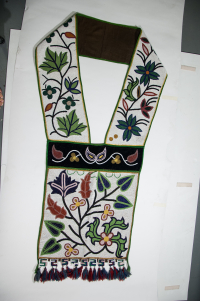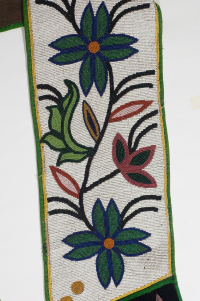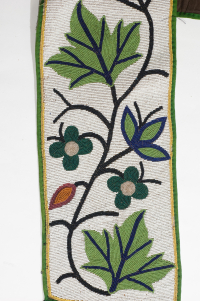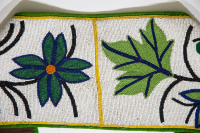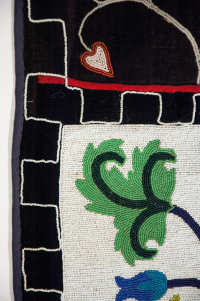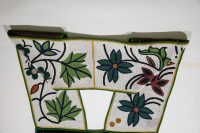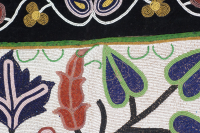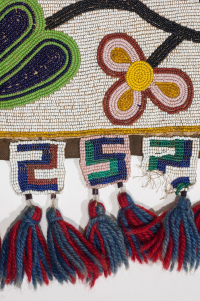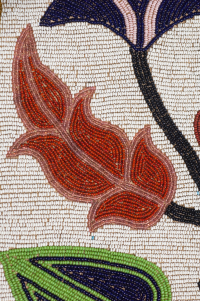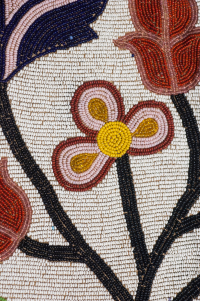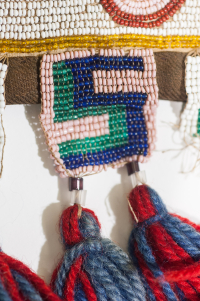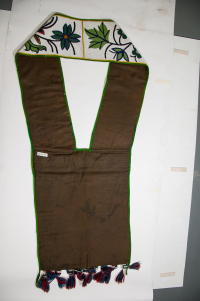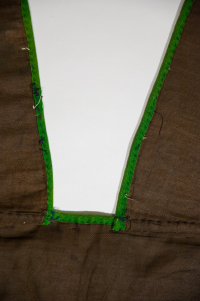Bandolier Bag
Bandolier Bag
Bandolier Bag
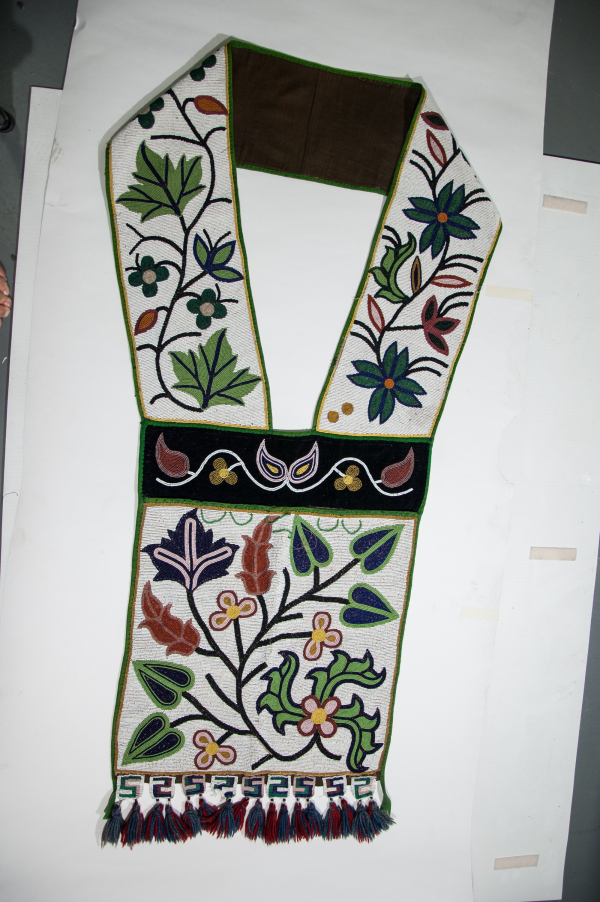
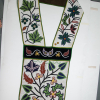


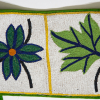
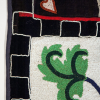
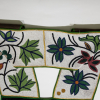
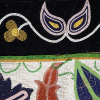
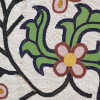
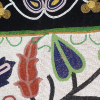

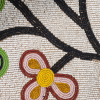
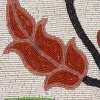
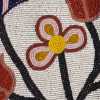

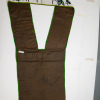
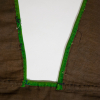
Beadwork panels, overlaid spot stitch applique, multicoloured florals, pocket stitched shut, 9 tabs with doubled yarn tassels, top edge, green bead loops
Attributed to the Saulteaux cultural type.
Summary of available descriptive information
Read More About This Relative
Fabric, velveteen, black; Fabric, cotton, brown; Binding tape, medium green; Yarn, medium red & medium blue; Tube beads, transparent dark brown & clear; Seed beads, glass, clear, opaque white, opaque black, red (opaque mahogany, opaque dusty rose, transparent dusty rose, opaque rose, opaque crimson, transparent medium pink), orange (opaque marigold), yellow (opaque medium, transparent medium); green (opaque pear, transparent dark green, opaque light green, transparent teal), blue (opaque admiral, opaque navy).
Hand sewn straps and pouch panel of brown cotton with bead decoration; Edged with green bias tape forming tabs at bottom corners; Top edge of pouch panel has six/seven loops of green beads; Nine loom woven beaded tabs with yarn tassels, beadwork on panel and straps asymmetrical in design, beadwork on panel above pouch horizontally symmetrical; "spirit beads incorporated.
Closed backed overlaid spot stitch applique in curvilinear designs of multi-coloured three -petalled flower, four-petalled flower, eight-petalled flower, ragged leaf, ovate leaf, lanceolate leaf, maple leaf?, and stems in a white field, Bordered with double row semi-translucent yellow beads, Decorative panel above pocket with applied floral stem and leaf seed bead design on black velveteen, Nine woven beaded tabs sewn to bottom each finished with two strands faceted mauve, green and transparent clear tube beads attached to red and blue yarn tassels, tab design geometric with colour and pattern repeating from centre out, floral stem and leaf;
On spirit beads: "First Nations and Métis beadworks often intentionally positioned on or two beads out of place on a garment. Frequently they stitched an oddly coloured or shaped bead into an otherwise perfect motif. This practice reinforced the belief that only the creator is perfect" (McCord Museum, p.199)
Bandolier bags most likely originated in the Upper Great Lakes region during the 1840s and 1850s. Fashioned exclusively from European materials and adorned with thousands of beads, bandolier bags were primarily for show, as a symbol of identity, wealth and status. Although initially functional, by the late 19th and early 20th centuries many of the bags had false pockets or none at all. Sometimes called "friendship bags", they were often created as gifts to strengthen relationships within communities or between nations. By the 1870s they had become an important element of formal dress worn mainly at ceremonies and celebrations by men, and occasionally by women. They wore them - singly or several at a time - crossed over the torso or draped around the neck. “The wearing of more than one bag was generally the prerogative of a leader or a person of high honour." (McCord, 2013) “Bandoliers were adopted by Ojibwa in 19th century after seeing bullet pouches used by British soldiers. Bullet pouches were plain and decorated with crest or coat of arms. When idea adopted by Ojibwa, they were greatly prized and highly decorated ceremonial accessories. They became so highly prized by Ojibwa and other tribes (especially Sioux), that one bandolier could be traded for one pony. They became a status symbol of highest ranking Midewiwin priests. (Flanders, 1977)
Provenance
McCord Museum, Wearing Our Identity. Montreal: The McCord Museum, 2013; and “Beads: Their Use By Upper Great Lakes Indians” by Richard Flanders, 1977
McCord Museum. Wearing Our Identity. Montreal: The McCord Museum, 2013. Print.
About This GRASAC Record
Manitoba Museum
Content from the Manitoba Museum's catalog records. Uploaded by Orvis Starkweather as part of their summer internship.
43.0703, -80.1184
Attributed to Northeast Great Lakes-Riverine ? Geo-cultural area.
 Knowledge Sharing Platform
Knowledge Sharing Platform

